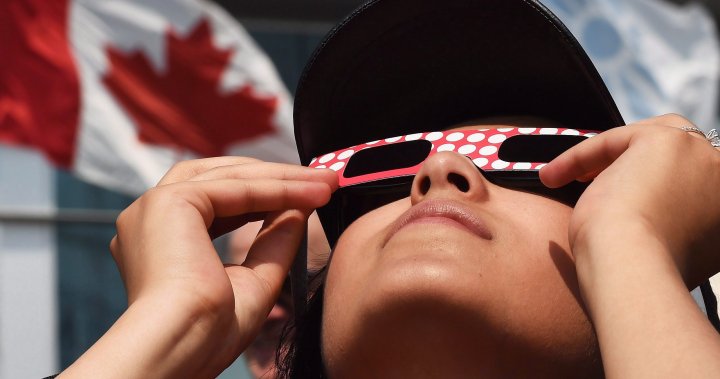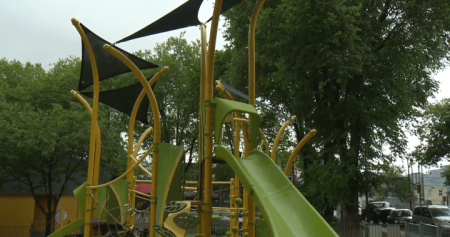Canadians are eagerly anticipating the total solar eclipse that is set to occur on April 8, with preparations underway in cities and towns that are in the path of totality. Several schools in Ontario and Quebec are closed for the event, and some individuals are taking time off from work to witness this rare celestial occurrence. The Niagara Region has declared a state of emergency due to the expected influx of visitors. The Canadian Space Agency explains that a solar eclipse happens when the moon passes between the Earth and the sun, casting a shadow on the Earth. A total solar eclipse occurs when the moon perfectly aligns with the Earth and sun, blocking out sunlight for a period of time.
Toronto-based planetary scientist Sara Mazrouei notes that solar eclipses happen approximately every six months. According to NASA, there are between two to five solar eclipses of various types seen from Earth each year. A total solar eclipse is visible once every 18 months to two years from somewhere on Earth, making it a potentially rare occurrence for a specific location. The last time a total solar eclipse crossed Canada was in 1979, and the upcoming one will pass through parts of Ontario, Quebec, and other provinces. Cities and towns outside the path of totality will experience a partial solar eclipse, depending on their location and the time of day.
In Canada, the total solar eclipse is expected to begin at 3:12 p.m. ET and end at 4:16 p.m. ET, with a partial eclipse visible between 1:40 p.m. ET and 5:18 p.m. ET. The duration of the partial eclipse will be longer than the total eclipse, which only lasts a few seconds to a few minutes. Proper eye protection is essential when viewing an eclipse, as looking directly at the sun without the appropriate glasses can lead to severe eye damage. The Canadian Space Agency warns of the risks, even when the sun may appear partially obscured by the moon. Counterfeit eclipse glasses are a concern, and individuals are advised to purchase from authorized suppliers listed by the American Astronomical Society to ensure safety.
It is crucial to protect your eyes and devices from the harmful effects of the sun during a solar eclipse. Viewing the eclipse directly without proper protection can cause irreversible eye damage, and using regular sunglasses is not sufficient. Specialist Sara Mazrouei advises using special eclipse filters for phones and cameras to prevent damage. After the upcoming solar eclipse, Canadians will have to wait until 2044 for the next total solar eclipse visible from Canadian soil. In the meantime, there will be opportunities to witness other celestial events, such as annular and partial solar eclipses, as well as lunar eclipses. A partial lunar eclipse, for example, will be visible across Canada in 2024.
In conclusion, Canadians are eagerly awaiting the total solar eclipse that will occur on April 8, with preparations underway in cities and towns across the country. Proper eye protection is essential when viewing an eclipse, as looking directly at the sun without the appropriate glasses can lead to severe eye damage. Counterfeit eclipse glasses are a concern, and individuals are advised to purchase from authorized suppliers listed by the American Astronomical Society to ensure safety. Specialists recommend using special eclipse filters for phones and cameras to prevent damage caused by the concentrated sunlight. The upcoming solar eclipse offers a rare opportunity for Canadians to witness this celestial event, with the next total solar eclipse visible from Canadian soil not occurring until 2044. Additionally, there will be other opportunities to witness various celestial events, such as annular and partial solar eclipses, as well as lunar eclipses, in the coming years.















